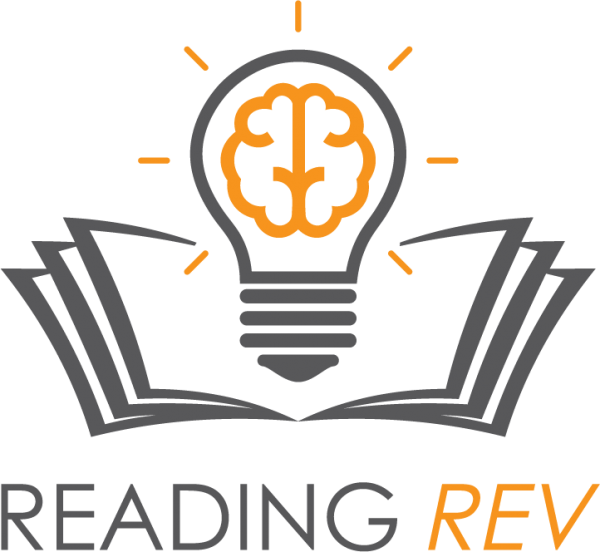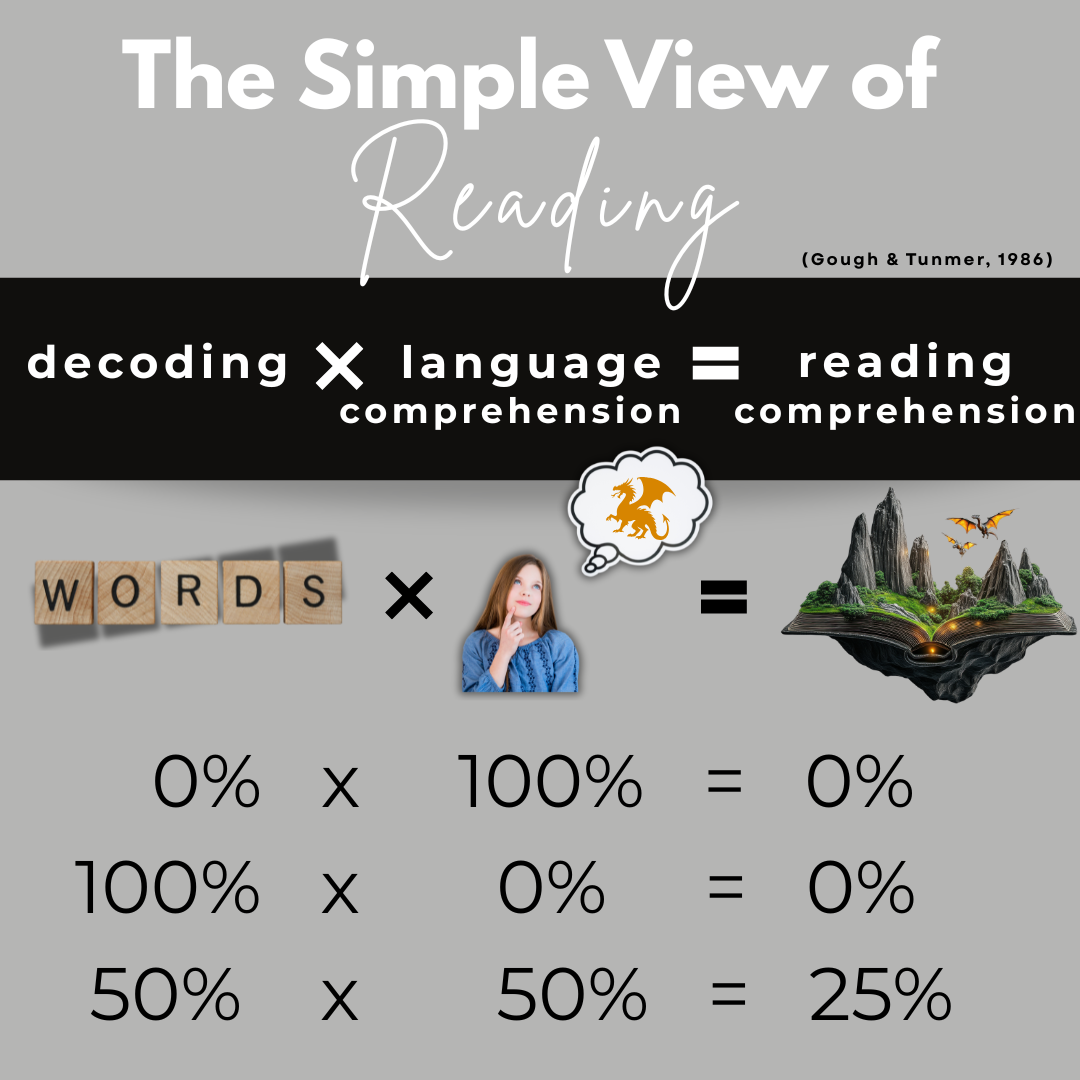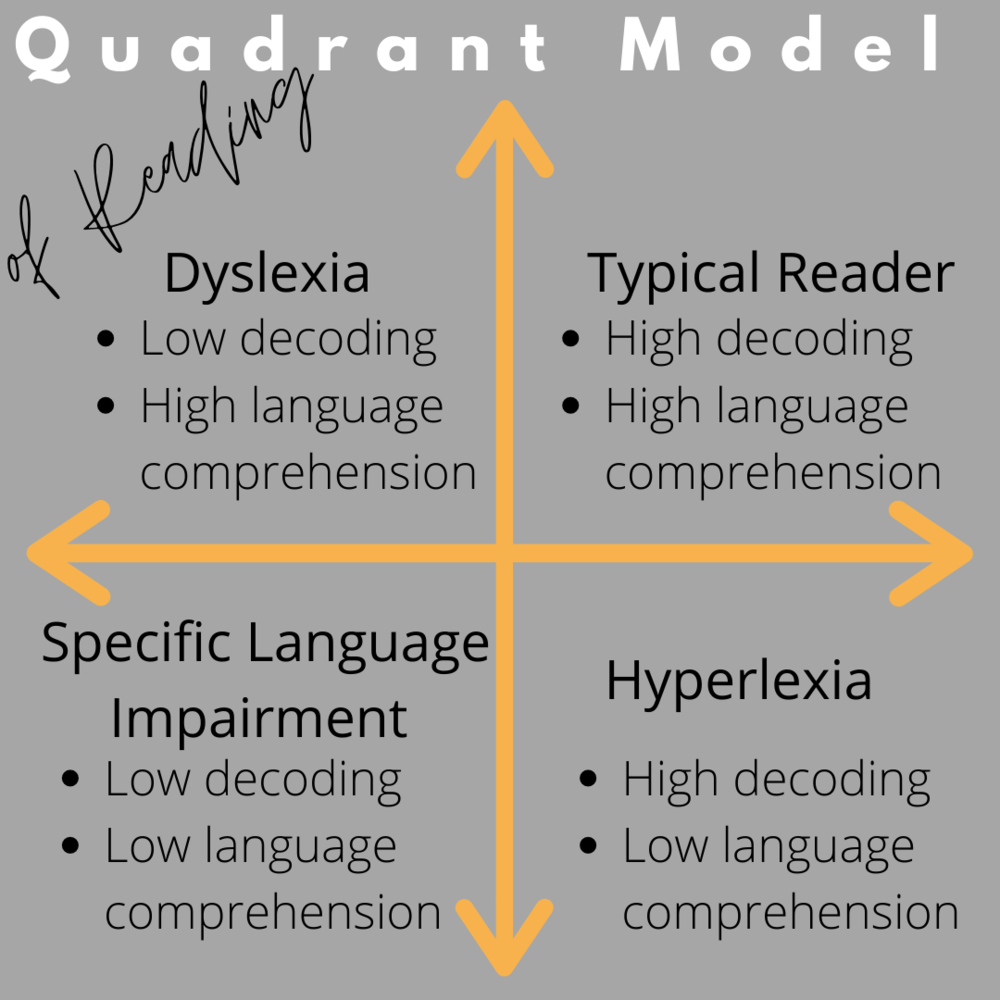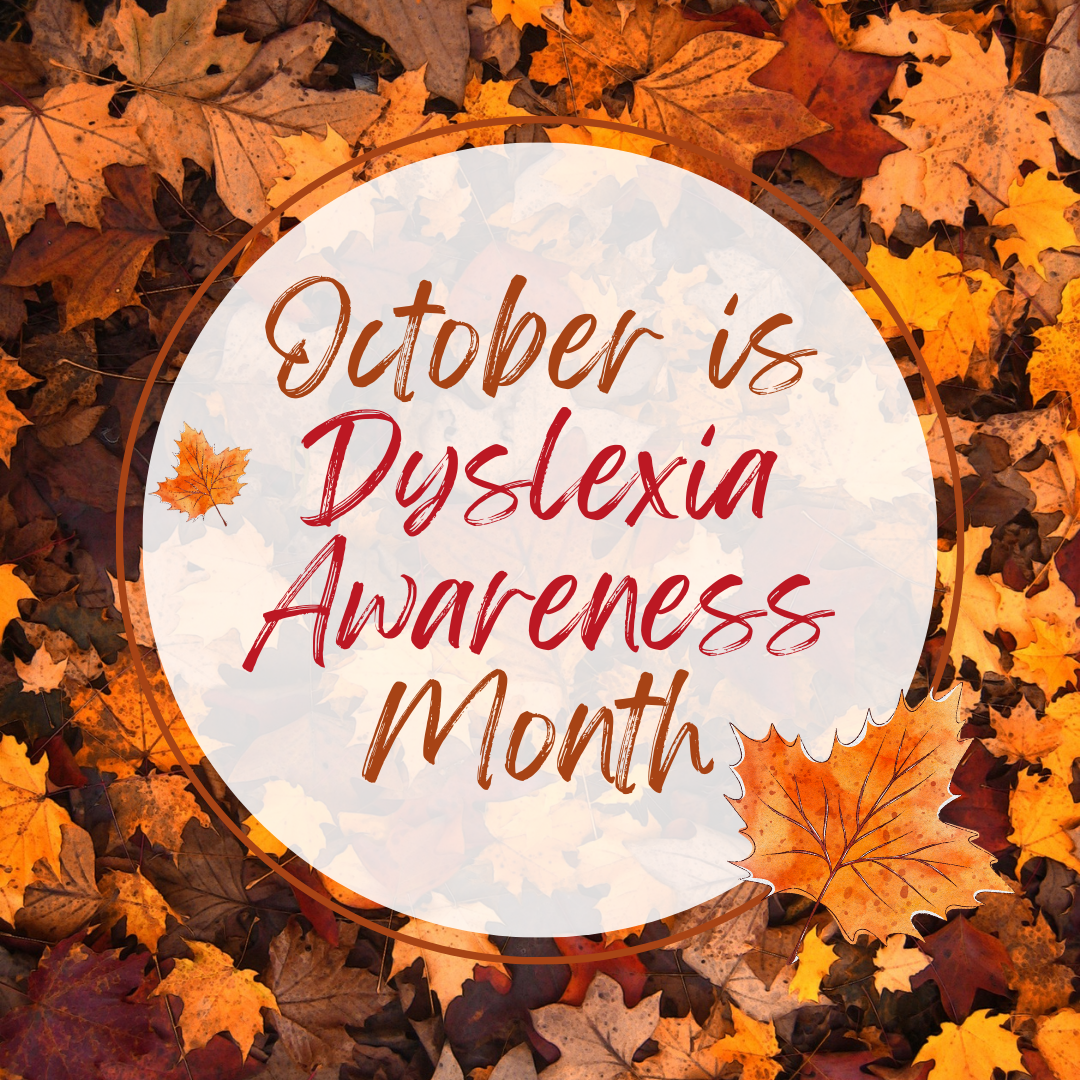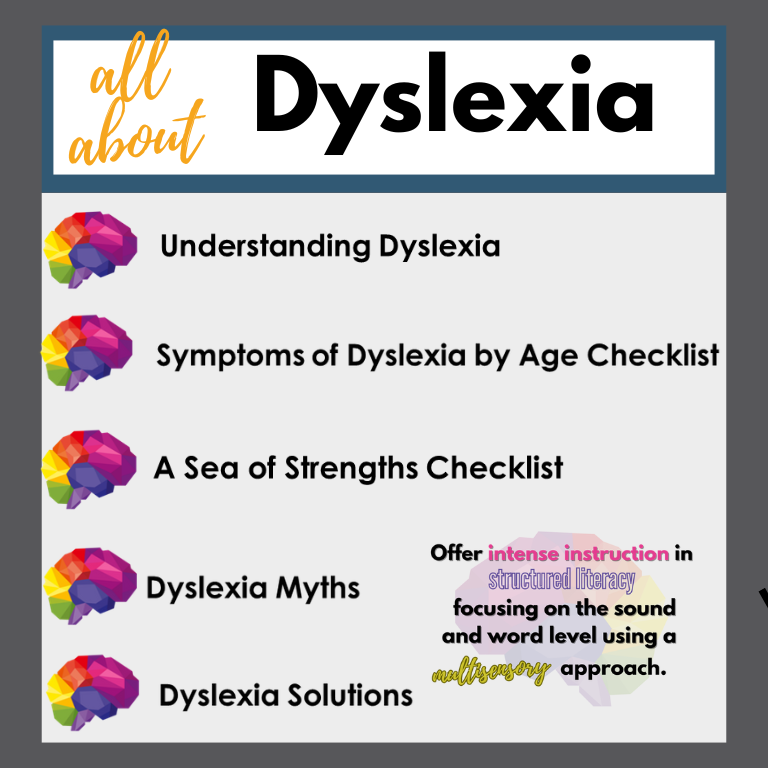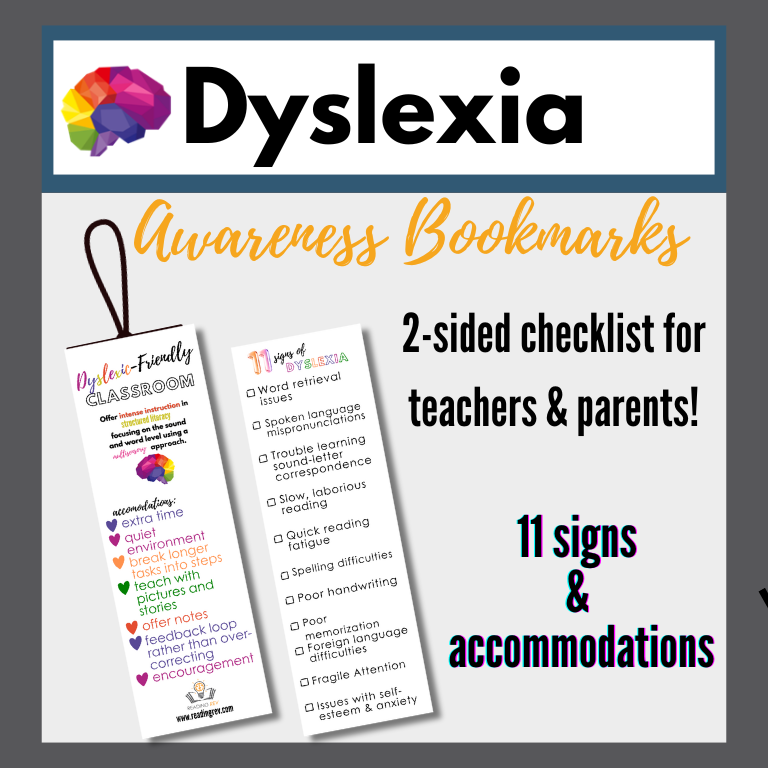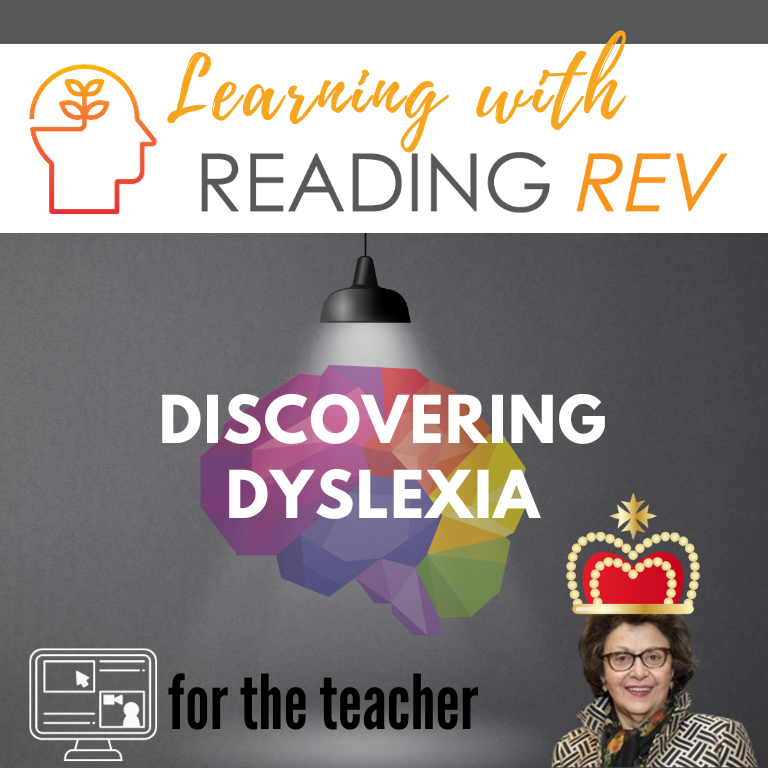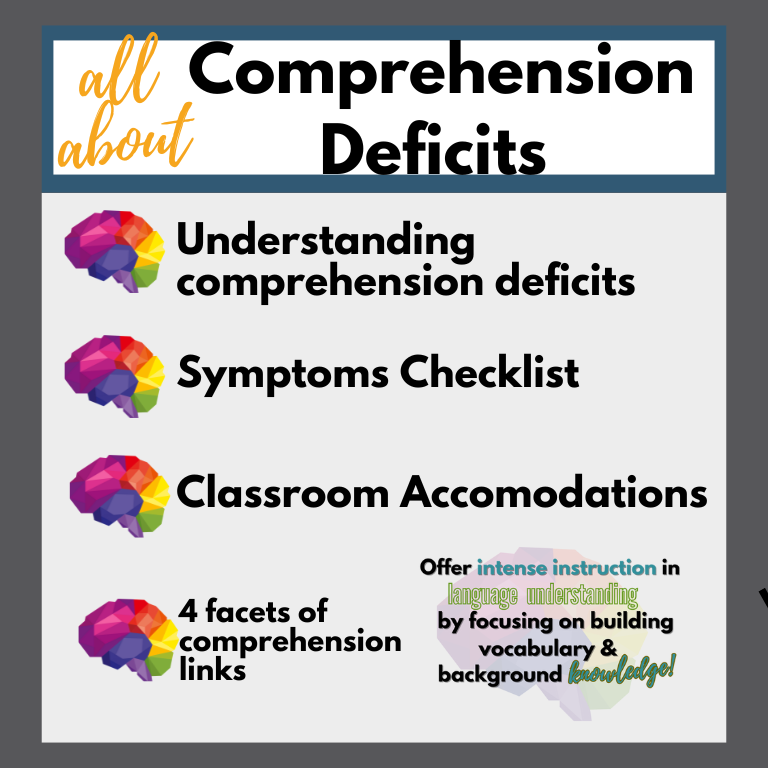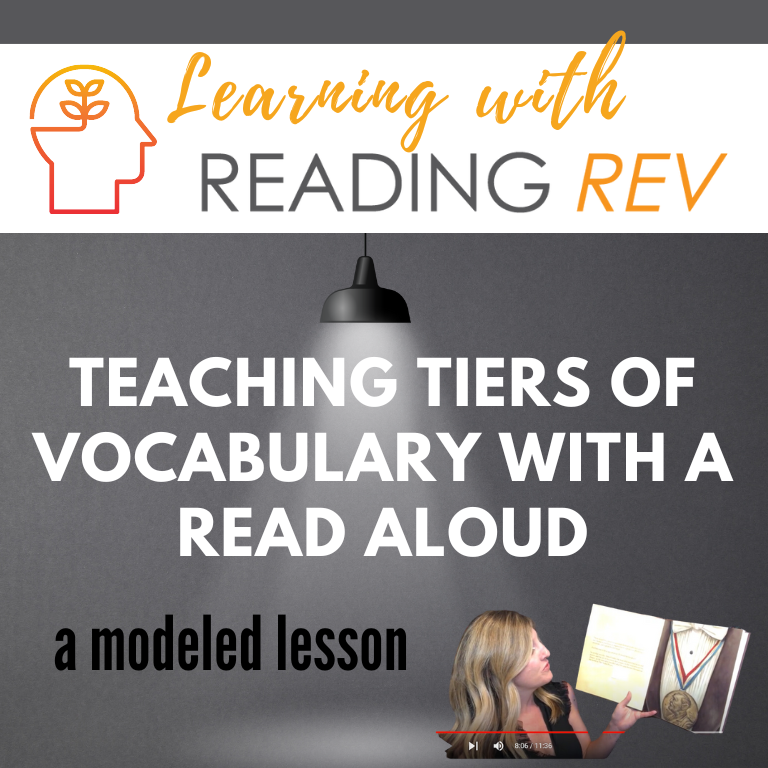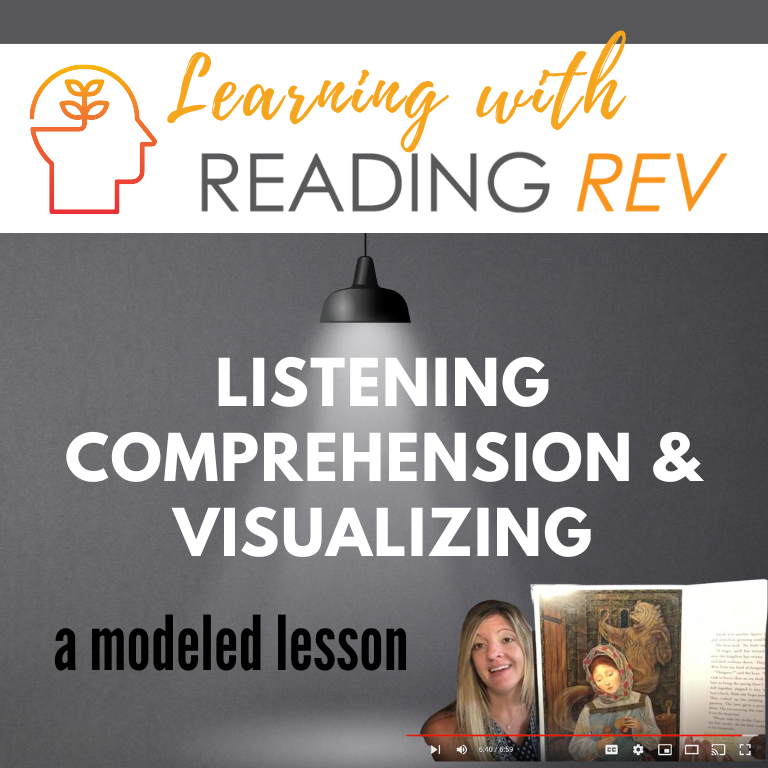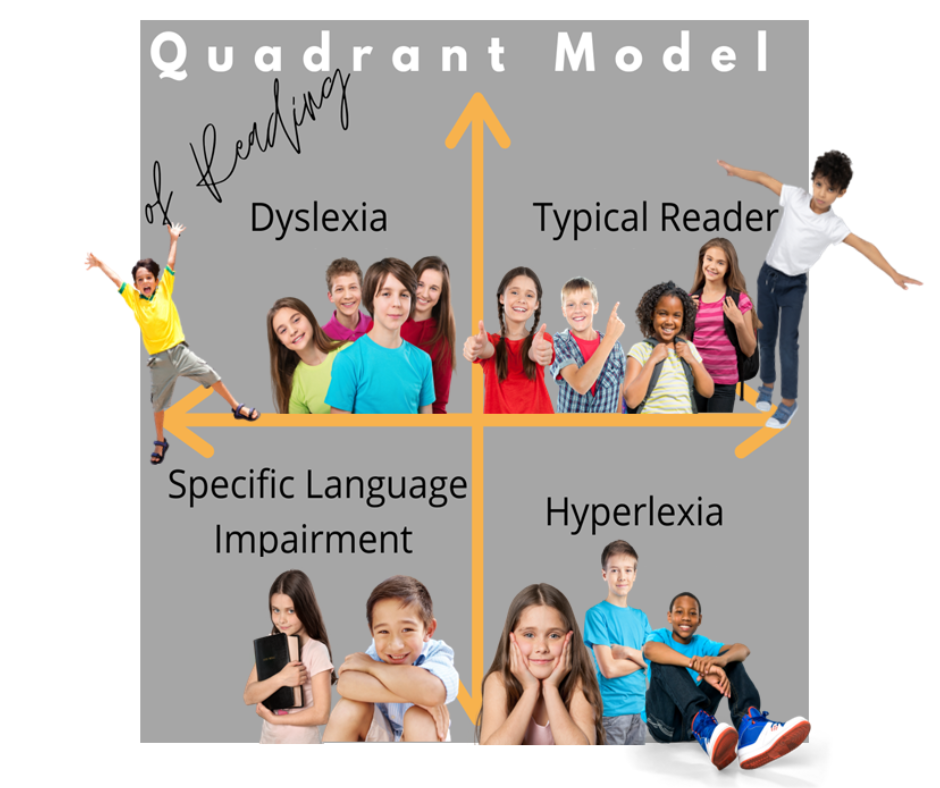Common Reading Disabilities Explained
Let’s know better so we can do better!
One knowledgeable, compassionate teacher can change everything.
Reading disabilities are pretty common but can be confusing because there are several different reasons why your child may be struggling with literacy. Educators and specialists often look at several areas when determining if a child has a reading disability.
The Simple View of Reading (Gough & Tunmer, 1986) can help us understand what might be happening. The first idea is that there are two major components to reading: decoding and language comprehension. Together, these two components create reading comprehension.
Decoding x Language Comprehension = Reading Comprehension
Decoding is the ability to match letters to sounds to figure out a word accurately in a quick and fairly effortless way.
Language Comprehension is the ability to obtain meaning from spoken words and sentences.
These two components of reading are then put into a formula.
Just like in a math equation, if either number is 0, the product is 0. So, if students are struggling to decode, their reading comprehension is negatively affected. When students struggle to understand spoken language, their reading comprehension will also suffer.
It is our job as teachers and parents to determine if a student is struggling with decoding, language comprehension, or both.
The Quadrant Model shows the possibilities of reading performance.
Systematic, structured literacy is beneficial for all students, but critical for those struggling. Students with average ability in both decoding (sound/word level) and language comprehension (sentence/discourse areas) are considered typical learners.
Dyslexia
Dyslexia is a neurological condition that affects approximately 15-20% of the population. It impacts a person's ability to read, spell, and write. It is a specific learning disability that primarily impacts language-related skills, despite individuals having average to above-average intelligence. People with dyslexia may struggle with processing phonological information, which refers to the ability to recognize and manipulate the sounds of language.
Common characteristics of dyslexia include:
Difficulty with Reading: Individuals with dyslexia may have trouble recognizing words accurately and quickly. They might read slowly, skip words, and have difficulty decoding unfamiliar words.
Spelling Challenges: Spelling can be a significant challenge for people with dyslexia. They might reverse or mix up letters in words, making their writing less accurate.
Writing Issues: Dyslexia can also affect a person's ability to express themselves in writing. Organizing thoughts and ideas can be more challenging.
Phonological Awareness: This refers to the ability to break down and manipulate the sounds in language. People with dyslexia often struggle with phonological awareness, which can impact their reading and spelling skills.
Working Memory: Some individuals with dyslexia may have difficulties with short-term memory and processing information quickly, which can affect tasks like following instructions or remembering sequences.
Dyslexia is a diverse condition, and its severity and symptoms can vary widely among individuals. Early diagnosis and intervention, such as specialized reading programs and educational support, can significantly improve reading and language skills in individuals with dyslexia. With the right strategies and accommodations, people with dyslexia can achieve their potential and excel in various areas of life.
Made By Dyslexia is a nonprofit redefining dyslexia. They are educating teachers, parents, and employers and shedding light on the sea of strengths dyslexics possess. Changing our mindset will change lives.
We are celebrating dyslexia awareness throughout October and beyond! Get our Bite-Size PD, All About Dyslexia PowerPoint Presentation, Dyslexic-Friendly Classroom Poster & Bookmark, and so much more in the Reading Rev VIP site.
Specific Comprehension Deficit
When a child can decode and read the words well, but struggles to comprehend what they read, they may have a specific comprehension deficit. This is also known as specific reading comprehension impairment. They both refer to a condition in which an individual has difficulty understanding and making sense of what they read, even though they may be able to read the words accurately and fluently. This means that they can decode the words and sentences but struggle to comprehend the meaning and context of the text. Sometimes educators refer to these students as word-callers.
Hyperlexia is a condition where a person, often a very young child, shows an extraordinary ability to read words and understand written language. However, they struggle to understand what they read and other aspects of language, such as spoken communication and social interactions. In simple terms, it's like a superpower for reading early on, but it can be accompanied by difficulties in other language-related skills.
Common characteristics of specific comprehension deficit include:
Difficulty understanding the main idea or key points of a text.
Struggles with making inferences or drawing conclusions based on the information in the text.
Difficulty summarizing or retelling what they've read in their own words.
Problems answering questions about the material they've read.
May seem to "zone out" or lose focus while reading.
Limited vocabulary and difficulty with understanding complex or unfamiliar words.
Difficulty connecting information from different parts of the text to form a coherent understanding.
Challenges with understanding figurative language, metaphors, or idioms in text.
May avoid or become frustrated with reading tasks, especially longer or more complex texts.
Reading comprehension abilities may lag behind their peers, despite fluent word recognition skills.
It's important to note that these symptoms can vary in severity from person to person, and they can be influenced by factors such as age and the complexity of the material being read. Additionally, specific comprehension deficits can sometimes co-occur with other learning or language difficulties, so a comprehensive evaluation by a qualified professional is often necessary for an accurate diagnosis and appropriate support.
We did a deep dive into language comprehension and found that these four facets are most impactful. You can revisit the four parts in the Language Comprehension Side of Things Series here:
1- Building Background Knowledge
2- Vocabulary
3- Syntax and Sentence Structure
You can find all of these language comprehension resources in Reading Rev’s VIP site.
Specific Language Impairment
When a child has low decoding skills and low language comprehension skills, they can be identifies as having a General Reading Disability or Specific Language Impairment. These students need intense instruction and intervention with the foundational skills of reading and comprehension by a qualified teacher or academic therapist.
First Steps...
The first step when we see a child struggling with reading and writing is to assess what aspect of reading is problematic. Early intervention is key. Waiting to see if a child will “pick it up” or “outgrow” or grow into” is never a good idea. Knowing what area of the Simple View of Reading is impacting the child and then knowing how to intervene is vital. If you are a parent needing a gameplan or starting point, read 7 Tips for Parents: Take Action When Your Child is Struggling with Reading.
One knowledgeable, compassionate teacher can change everything.
We know the importance of seeing our children as humans with a beautiful array of strengths and weakness. We’d love to hear how you are learning more and supporting your students in the classroom. Leave a comment below.
